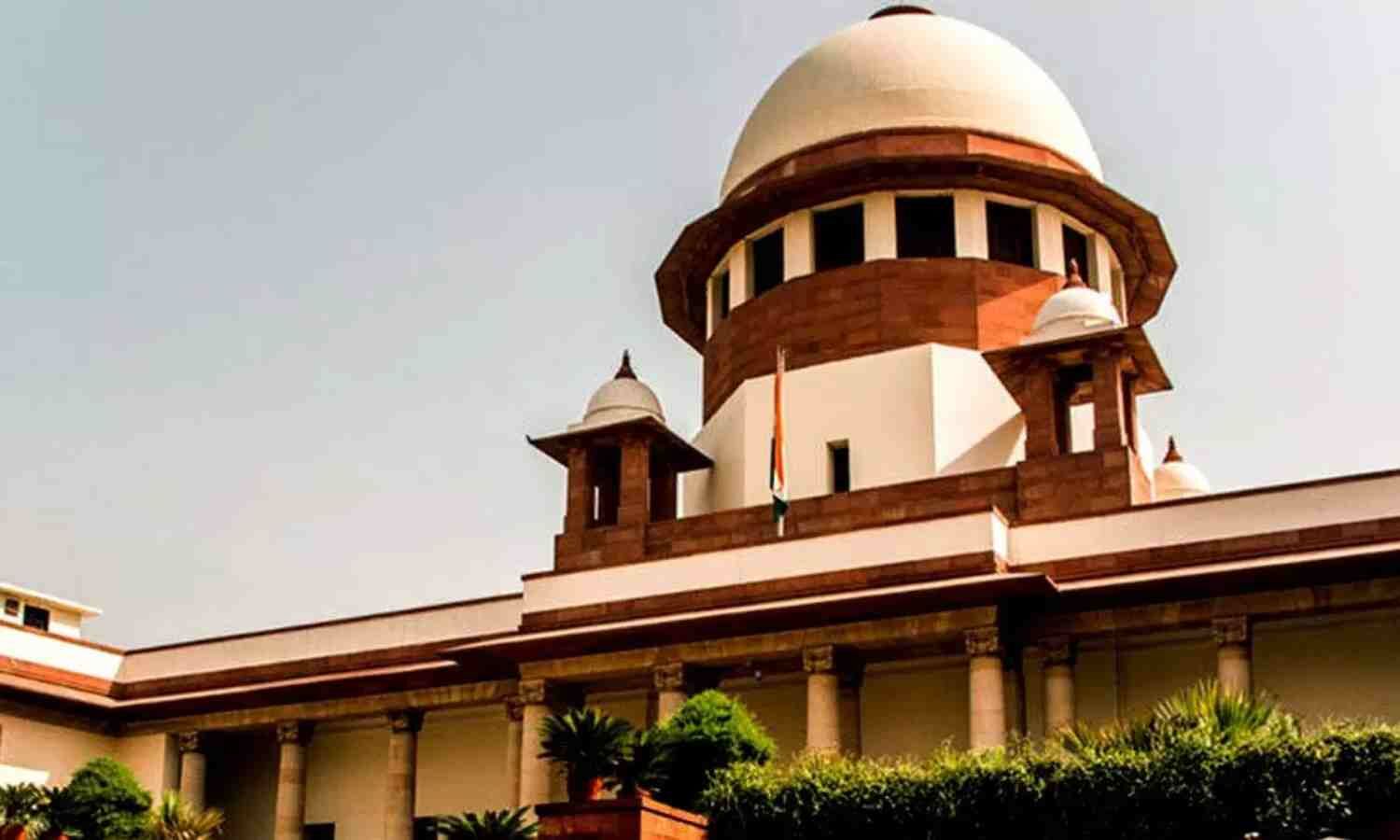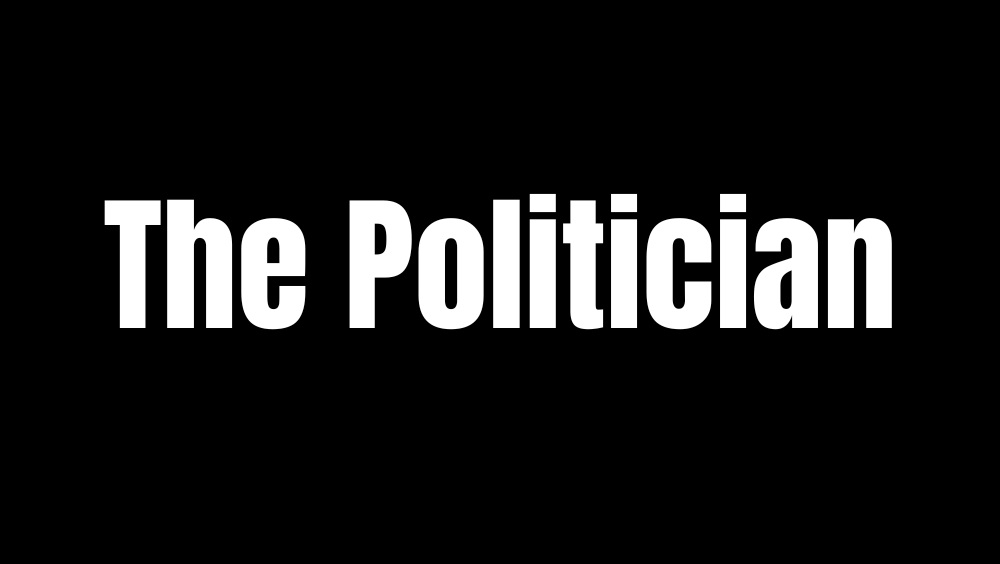Myanmar, Sri Lanka, Bangladesh, Pakistan and now Nepal: How India has remained a strong, stable democratic force in an increasingly chaotic and unstable neighbourhood
In the recent past, South Asia has become a hotspot for political upheaval. India’s neighbours have witnessed protests-driven regime changes. Nepal has descended into chaos after a Gen-Z uprising toppled the Prime Minister KP Sharma Oli-led government on 9th September 2025. While a social media ban became an immediate trigger, the Nepali youth have been protesting against rampant corruption in the now-overthrown government. Prime Minister KP Sharma Oli’s resignation, after one of the deadliest crackdowns in years that left 19 young protesters dead, has plunged the country into political turmoil. His Bhaktapur residence was set ablaze, the homes of former prime ministers Pushpa Kamal Dahal “Prachanda” and Sher Bahadur Deuba vandalised, and three of his ministers forced to resign. The protests in Nepal have taken a violent turn as angry mobs storm into official residences of ministers. At least 17 people were killed in clashes in Kathmandu alone, police confirmed, while two more deaths were reported in Sunsari district. On Tuesday, protesting mobs stormed into the residence of Foreign Minister Arzu Rana Deuba, who is the wife of former PM Sher Bahadur Deuba. The Deuba couple have also been physically attacked by the mob after angry protestors stormed into their residence. #WATCH | Nepal | Aftermath of the violence that broke out in the Parliament building, which was set on fire on 8th September, as the protest turned violent in Kathmandu. The Nepali PM resigned yesterday amid demonstrations against the Government over alleged corruption. pic.twitter.com/EJNZS6o7OS— ANI (@ANI) September 10, 2025 Nepal’s parliament, the famous Hilton Hotel and many buildings were set ablaze. The protestors also broke into the Singha Darbar premises, a large complex in Kathmandu which houses Nepal’s administrative offices, and set its gate on fire while forcing their way into the central administrative complex. The ancient Pashupatinath Temple is being protected by the Nepalese Army as hooligans attempted to enter the Hindu temple. The wife of former Prime Minister of Nepal, Jhalanath Khanal, succumbed to burn injuries on Tuesday after Khanal’s residence was set on fire by protestors. Nepal government’s ministers are being chased and assaulted by mobs. Protestors even said that they want to beat up KP Sharma Oli but he is nowhere to be found. Now the army has taken over control and enforced curfew. Amidst the chaos, Nepali GenZ protestors have issued statements claiming that they have fallen back and those indulging in arson and destruction of public property are not a part of their anti-corruption agitation. Meanwhile, political manoeuvring has intensified in the unrest-hit Himalayan nation, as former PM Oli is likely to flee. Names of rapper-turned-politician and Kathmandu mayor, Balen Shah, Hami Nepal founder Sudan Gurung, who led the anti-government protests, are emerging as the popular choices to fill the power vacuum. OpIndia earlier reported about their activities, controversies and US connection. What is happening in Nepal has become so ‘normal’ in South Asia that it no longer surprises those closely following geopolitics. Such regime changes stem from economic crises, allegations of corruption, authoritarian crackdowns, and youth-led agitations demanding ouster of the ‘corrupt’ and accountability. Although in Afghanistan’s case, the regime change stemmed not only from economic factors and domestic power tussle but also from the US military withdrawal in 2021, resulting in a Taliban takeover. Myanmar: The first successful regime change in the region in the recent past In February 2021, the military of Myanmar staged a coup d’état and ousted the democratically elected government led by popular leader Aung San Suu Kyi. The National League for Democracy (NLD) government was illegally ousted from power after it emerged victorious again in the 2020 elections receiving even more votes than in 2015. The military in its coup orchestrated a crackdown in which several political leaders including Aung Suu Kyi were arrested. In no time, massive nationwide protests, strikes and civil disobedience erupted, which evolved into the ‘Spring Revolution’. Much like Nepal, this spring revolution was led by Gen Z. These youths and civil servants demanded release of Suu Kyi and sought restoration of democracy. However, the military junta employed brutal force to crush the agitation and killed over 1,500 people and arrested thousands. Protestors in Bago in 2021 (Image source: KenRoth/X) The chaos magnified into armed resistance and People’s Defence Force and other armed groups came into existence. By 2025, the pro-democracy protest has escalated into a full-scale civil war. Millions have been displaced, thousands have died. Junta’s violent crackdown, suspension of constitutional rights and internet shutdowns have entrenched the authoritarian rule. The Military had ruled Myanmar for five decades befor



In the recent past, South Asia has become a hotspot for political upheaval. India’s neighbours have witnessed protests-driven regime changes. Nepal has descended into chaos after a Gen-Z uprising toppled the Prime Minister KP Sharma Oli-led government on 9th September 2025. While a social media ban became an immediate trigger, the Nepali youth have been protesting against rampant corruption in the now-overthrown government.
Prime Minister KP Sharma Oli’s resignation, after one of the deadliest crackdowns in years that left 19 young protesters dead, has plunged the country into political turmoil. His Bhaktapur residence was set ablaze, the homes of former prime ministers Pushpa Kamal Dahal “Prachanda” and Sher Bahadur Deuba vandalised, and three of his ministers forced to resign.
The protests in Nepal have taken a violent turn as angry mobs storm into official residences of ministers. At least 17 people were killed in clashes in Kathmandu alone, police confirmed, while two more deaths were reported in Sunsari district. On Tuesday, protesting mobs stormed into the residence of Foreign Minister Arzu Rana Deuba, who is the wife of former PM Sher Bahadur Deuba. The Deuba couple have also been physically attacked by the mob after angry protestors stormed into their residence.
#WATCH | Nepal | Aftermath of the violence that broke out in the Parliament building, which was set on fire on 8th September, as the protest turned violent in Kathmandu.
— ANI (@ANI) September 10, 2025
The Nepali PM resigned yesterday amid demonstrations against the Government over alleged corruption. pic.twitter.com/EJNZS6o7OS
Nepal’s parliament, the famous Hilton Hotel and many buildings were set ablaze. The protestors also broke into the Singha Darbar premises, a large complex in Kathmandu which houses Nepal’s administrative offices, and set its gate on fire while forcing their way into the central administrative complex. The ancient Pashupatinath Temple is being protected by the Nepalese Army as hooligans attempted to enter the Hindu temple. The wife of former Prime Minister of Nepal, Jhalanath Khanal, succumbed to burn injuries on Tuesday after Khanal’s residence was set on fire by protestors.
Nepal government’s ministers are being chased and assaulted by mobs. Protestors even said that they want to beat up KP Sharma Oli but he is nowhere to be found. Now the army has taken over control and enforced curfew.
Amidst the chaos, Nepali GenZ protestors have issued statements claiming that they have fallen back and those indulging in arson and destruction of public property are not a part of their anti-corruption agitation.
Meanwhile, political manoeuvring has intensified in the unrest-hit Himalayan nation, as former PM Oli is likely to flee. Names of rapper-turned-politician and Kathmandu mayor, Balen Shah, Hami Nepal founder Sudan Gurung, who led the anti-government protests, are emerging as the popular choices to fill the power vacuum. OpIndia earlier reported about their activities, controversies and US connection.
What is happening in Nepal has become so ‘normal’ in South Asia that it no longer surprises those closely following geopolitics. Such regime changes stem from economic crises, allegations of corruption, authoritarian crackdowns, and youth-led agitations demanding ouster of the ‘corrupt’ and accountability. Although in Afghanistan’s case, the regime change stemmed not only from economic factors and domestic power tussle but also from the US military withdrawal in 2021, resulting in a Taliban takeover.
Myanmar: The first successful regime change in the region in the recent past
In February 2021, the military of Myanmar staged a coup d’état and ousted the democratically elected government led by popular leader Aung San Suu Kyi. The National League for Democracy (NLD) government was illegally ousted from power after it emerged victorious again in the 2020 elections receiving even more votes than in 2015. The military in its coup orchestrated a crackdown in which several political leaders including Aung Suu Kyi were arrested.
In no time, massive nationwide protests, strikes and civil disobedience erupted, which evolved into the ‘Spring Revolution’. Much like Nepal, this spring revolution was led by Gen Z. These youths and civil servants demanded release of Suu Kyi and sought restoration of democracy. However, the military junta employed brutal force to crush the agitation and killed over 1,500 people and arrested thousands.

The chaos magnified into armed resistance and People’s Defence Force and other armed groups came into existence. By 2025, the pro-democracy protest has escalated into a full-scale civil war. Millions have been displaced, thousands have died. Junta’s violent crackdown, suspension of constitutional rights and internet shutdowns have entrenched the authoritarian rule.
The Military had ruled Myanmar for five decades before the power was handed over to democratically elected leaders. However, with Suu Kyi ousted from power, Myanmar has neither seen democracy nor normalcy, return.
‘Aragalaya’ in Sri Lanka ousted the Rajapaksa family from power in 2022
Economic crisis, soaring debt, tax cuts, COVID, failed organic farming policy, fuel shortage, food and medicine scarcity, depleting foreign exchange reserves and a increase in inflation to 70 percent, prompted Sri Lanka’s first sovereign default in April 2022.
President Gotabaya Rajapaksa and his family were accused of corruption and mismanagement and citizens demanded his resignation.
In July 2022, Sri Lanka erupted. Protesters, mostly youth, stormed President Gotabaya Rajapaksa’s official residence in Colombo, sending him fleeing to safety. Images of citizens swimming in his pool and cooking in his kitchen captured global imagination. Later that day, the private residence of Prime Minister Ranil Wickremesinghe was set ablaze. Both leaders were forced to resign as the “Aragalaya” (struggle) movement brought down a political dynasty amid the island’s bankruptcy.
Pakistan: Imran Khan ousted from power under a US-backed regime change operation
Cricketer-turned-politician, former Prime Minister of Pakistan, Imran Khan was ousted from power in April 2022, through a no-confidence vote. This came amidst allegations of economic mismanagement and a fallout with Pakistan’s de facto ruler—Pakistan Army. Imran Khan had openly accused the US of orchestrating a regime change conspiracy against him. Khan was trying to curb military interference in governance; however, this did not go well the military. Interestingly, Khan had cited a diplomatic cable “Cypher”, to back his claim of US involvement in his ouster.
In May 2022, Imran Khan called for a Azadi March, drawing thousands of Pakistan Tehreek-e-Insaf (PTI) supporters to Islamabad demanding early elections. The protests turned violent and were brutally crushed down by the police. While Shehbaz Sharif became Army-backed Prime Minister, Imran Khan was arrested in May 2023. His arrest sparked nationwide riots, including attacks on military establishments. Imran Khan continues to be confined in jail in corruption cases, while Pakistan’s military-backed government which grabbed power after farcical elections were conducted, has now signed a deal with the US to squeeze natural resources of occupied Balochistan and make billions while Baloch people get tormented, kidnapped and killed by the army.

Meanwhile, once harboured by Pakistan Army itself, the Pakistani Talibans have been creating ruckus in northwest Pakistan. While Pakistan was never a quite politically stable and economically sound nation, toppling of Imran Khan government has not proven very beneficial for common Pakistani populace. Their economy is still in shambles, Islamabad is still breathing on IMF’s loan ventilator, Army still attacks its own civilians, be it Balochs, Pashtuns or PTI supporters.
Bangladesh: Sheikh Hasina illegally ousted from power by Gen Z ‘student’ protestors months after she alleged US regime change plot
On 5th August 2024, Bangladesh witnessed its own “Bangla Spring.” What began as student protests, led by the Students Against Discrimination movement, against a controversial job quota system escalated into nationwide violence. Jubilant protesters carrying flags, chanting slogans, and even dancing atop captured tanks stormed Sheikh Hasina’s official residence. By then, Hasina had already fled. Army Chief Waker uz Zaman confirmed her resignation, announcing an interim government would assume power.
According to reports, Hasina’s helicopter landed in Agartala, India, after New Delhi allowed her emergency entry.
Protesters ransacked her residence, looting sarees, utensils, and other personal items, brandishing undergarments, celebrating what they called the “reclaiming” of the palace from which “illegal orders to murder citizens” were issued. The scale of violence was staggering: on just one Sunday, 91 people were killed, making it the deadliest day of the uprising. By early August, at least 300 people had died since the protests began in July.
Hasina’s son, Sajeeb Wazed Joy, based in the US, had desperately urged the security forces to prevent the fall of his mother’s 15-year rule. “You must keep our people and country safe and uphold the constitution,” he pleaded on Facebook. But the army, much like in 2007 when it installed a caretaker government, chose to “stand by the people.”
While protests turned violent as conflicts between protestors and police became frequent, the violence worsened when the Jamaat-e-Islami (JeI) and the Bangladesh Nationalist Party (BNP) started to magnify the mayhem, using it to undermine the ruling Awami League government. Both Jamaat and BNP are notorious for their anti-India agenda and Islamist jihadist activities.
The sequence of events and Sheikh Hasina’s statements regarding attempts being made to destabilise Bangladesh and oust her from power illegally, fuel the speculation that the Awami League leader’s forced resignation and escape from her homeland was not simply a consequence of student protests but that of a US-orchestrated regime change operation.
Months before her resignation, Sheikh Hasina had alleged that the United States is attempting regime change in Bangladesh via the opposing BNP and Jamat-e-Islami. Last year, the US also extended support to the Islamist Bangladesh Nationalist Party (BNP) and its ally Jamaat-e-Islami during its protests against the PM Hasina-led government.
In September 2024, Sheikh Hasina accused the United States of orchestrating her removal from the post of PM because she refused to hand over Saint Martin Island to the US, which would have enabled the western superpower to have “sway over the Bay of Bengal”. Sheikh Hasina’s attempts to thwart an alleged US orchestrated regime change failed and she had to flee her homeland.
One year after Sheikh Hasina’s ouster, Bangladesh has fallen into the hands of Islamists and remains mired in instability, economic crisis and persistent Islamist crimes against Hindu minorities.
Myanmar, Sri Lanka, Pakistan, Bangladesh and now Nepal: Surrounded with countries grappling chaos and democratic collapse, India stands strong
In a stark contrast to its neighbours, who have undergone violent protests that resulted in regime change, violence, democratic collapse and economic pushback, India has braved all storms displaying its resilience as a stable democratic force. Vast in size, population and regional, religious, socio-political and linguistic diversity, India has maintained remarkable democratic stability and takes pride in being the world’s largest democracy.
India continues to have a stable and functioning democracy, a popular prime minister who has been in power for three consecutive terms, a free media and free social media. India has not only enjoyed internal stability but has also become a leader of the Global South. India’s economic growth, defence robustness and potential as massive market has impressed the world. However, it is not that India has never faced foreign entity-backed regime change operations or violent massive anti-government protests.
While I.N.D.I. Alliance parties, particularly, Congress has been trying to sow public distrust in India’s electoral system by repeatedly casting aspersions on the integrity of the Election Commission, the nation conducts regular, free, fair and peaceful elections, as prescribed in the constitution.
In the past, India braved emergency imposed by Prime Minister Indira Gandhi, fragile coalition eras without complete collapse. In the recent years, particularly, after 2014, the general election which positively altered India’s growth trajectory, the country has faced large-scale protests which were either meant to or had the potential to cause a regime change.
The 2019-2020 protests against the Citizenship Amendment Act (CAA), which granted Indian citizenship for persecuted Hindus and other non-Muslim minorities from neighbouring countries, snowballed into anti-Hindu riots in Delhi and in other states. However, the Central government tackled the situation well and the common public also saw through the conspiracy at play and did not significantly back the anti-CAA/NRC protests.
Soon after, the farmers protest erupted against three farm laws passed in September 2020. What began as a protest against alleged ‘dismantling’ of minimum support price (MSP) and state procurement, magnified into a massive anti-government agitation. While farmers from other states backed the reforms, farmers from Punjab and a section of Haryana farmers blockaded Delhi borders. Tractor Rally was taken to Delhi and religious flags were hoisted near the Red Fort. Violent incidents were reported. It also emerged that the farmer’s protest was being hijacked by Khalistan separatist elements.
However, unlike the Nepalese, Bangladeshi, Sri Lankan or Pakistani government, the Modi government did not resort to violent crackdown on the protestors. It would not be an exaggeration to say that the Modi government was one bullet fire on protestors away from a regime change. PM Modi, showed political tact and repealed the farm laws and appealed to the protestors to retreat.
Now, the opposition is peddling the ‘vote chori’ (vote theft) bogey to accuse the Election Commission and the BJP of colluding to steal the mandate in their BJP’s favour. Such attempts have seen a renewed intensity after the 2024 Lok Sabha elections. The Congres party and its leftist media allies, who have been mindlessly alleging EVM hacking, VVPAT tampering, is now alleging that the BJP supportive ECI is arbitrarily adding and removing names from electoral rolls. These claims, however, have been debunked by the ECI with facts.
The way the opposition is going about its sinister ‘vote chori’ narrative, it may be considering replicating the Khaleda Zia playbook: sow distrust in public’s mind against electoral process, boycott the elections, incite violent protests and oust the democratically elected leader, to become the sole runner in the race of power and come first.
OpIndia has reported many a times how Rahul Gandhi during his foreign trips has been seeking foreign intervention in India’s internal affairs, levelling ‘Democracy khatre mein hai’ allegations, casting aspersions on the integrity of the ECI while on foreign soil. From seeking foreign interference to relying on dubious foreign reports often prepared by outfits funded by the likes of regime change specialists, George Soros, to attack Indian businessmen like Gautam Adani, eulogising China to even recently parroting US President Donald Trump’s ‘India’s a dead economy’ jibe, the leading opposition party of India has been toeing the line of those foreign players who want to destabilise India.
So far, these forces have failed to incite Indians into going the Bangladesh, Nepal, or Pakistan way, rather, they have faced strong backlash. It reflects the faith people have in PM Modi’s leadership. No wonder, even some of the protesting Nepali youth have said that had there been a leader like PM Modi in Nepal, the country would have progressed way better and the need for street protests would never have arose.
Congress spends obscene amounts of money projecting Rahul Gandhi as a Gen Z “sex symbol” — with silly reels of him flaunting his abs, riding bikes, doing push-ups, or diving around.
— Amit Malviya (@amitmalviya) September 10, 2025
But the reality is stark: Gen Z in Nepal, like in India, aspires for a leader like PM Modi,… pic.twitter.com/yIrS0n4ANW
Under a stable and strong government, India has transformed itself into an economic giant becoming fourth largest and one of the fastest-growing economies in the world. Bharat is an ancient civilisation yet a young nation, with its young workforce, digital innovation, thriving trade relations with other countries, and timely economic reforms, contrast with economic instability of its neighbours.
As a leader of the Global South, India has also been a peacekeeping forced in the chaotic world. India provides humanitarian assistance as seen during Covid era (Vaccine Maitri) to its partners or disaster relief aid, be it to Nepal or Turkey. India also provides financial and infrastructure support to allies in need as seen in the case of $4 billion financial aid to crisis-hit Sri Lanka in 2022, and $50 million aid to Maldives. India is also a top contributor to UN peacekeeping missions. Indian navy ensures maritime security in the Indian Ocean, securing trade routes and countering piracy.
Despite the internal challenges and foreign threats, India has managed to sail through all the storms. The credit not only goes to the government but also to the India’s largely nationalist populace that has believed in responding vote not violence, dissent not destruction, and legal recourse than lawlessness.
























































































































